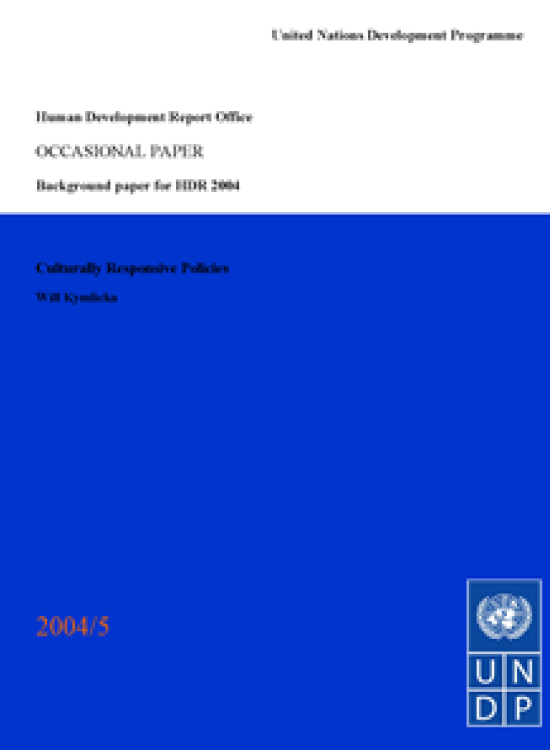Culturally Responsive Policies

Download Report by Language
Document
hdr2004willkymlicka.pdf
(310.08 KB)
Citation
Kymlicka, Will. 2004. Culturally Responsive Policies. New York.
Culturally Responsive Policies
Posted on: January 01, 2004
Around the world, ethnocultural minorities are demanding greater recognition and accommodation of their cultural practices and identities. Examples include demands for the recognition of customary law for indigenous peoples; demands for language rights by substate national groups; demands for the accommodation of cultural and religious practices by immigrant groups; and so on. The details of these various policies will be discussed below, but in general terms they can all be said to reflect a demand that ethnocultural diversity be respected and accommodated, rather than suppressed or ignored, by the state. This is an important trend that is reshaping political life around the world. These demands for more culturally inclusive policies are not just being asserted, but also, in many cases, being accepted and implemented, at least in part. We are witnessing the emergence of genuinely new models of "multicultural" states. Yet this is a controversial trend, and remains a very uneven process, both across different states and within states for different groups. My goal in this paper is to explore some of these new models of accommodating ethnocultural diversity through culturally inclusive policies, including the role of language policies and legal pluralism; and to discuss some of the limits to these models, and some of the obstacles to further progress in this area. First, however, I need to say something about the very idea of "cultural exclusion/inclusion", how it differs from other forms of exclusion/inclusion, and how it relates to the broader themes of the HDR.